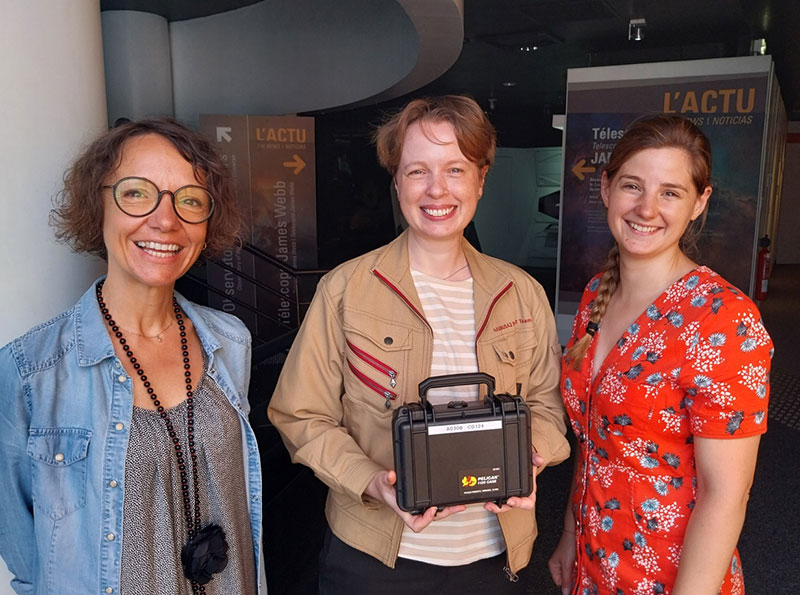In December 2020, the Hayabusa2 spacecraft returned to Earth with a sample collected from asteroid Ryugu. The sample is especially exciting as unlike meteorites that fall unprotected through the Earth's atmosphere to land on the ground, grains from asteroid Ryugu have been kept sealed away from contamination from the Earth's environment. These grains are now being studied in laboratories around the world to uncover information about how the Earth and Solar System formed. However, a few grains from the sample have been selected by the team to be seen not just by scientists, but by as many people as possible. These are the Ryugu outreach grains. This month, I couriered two of the grains to Cité de l'espace, a space exploration discovery centre in Toulouse, France.
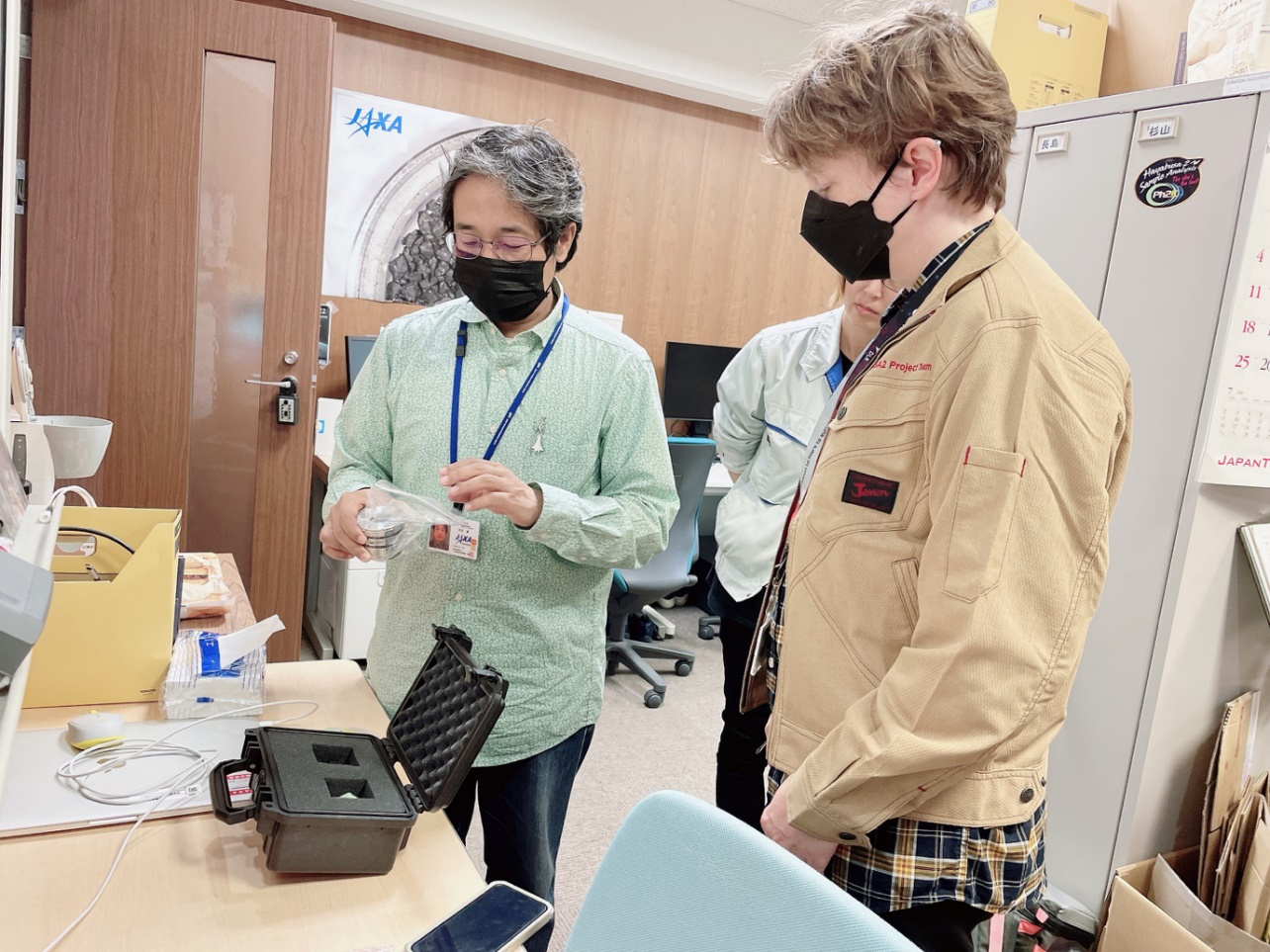
Cité de l'espace will display one grain sealed in epoxy resin, and a second grain contained in a facility-to-facility transfer container (FFTC). The FFTC is used when we move grains for scientific study between institutes. Yada Toru (left) from the ISAS Astromaterials Science Research Group explained how to handle the FFTC during transit to ensure that the grain does not become damaged. The FFTC must be kept vertical, so I needed to change the orientation within the Pelican protective travel case (on the table in the above photograph) if I wanted to rotate the case from vertical to horizontal during my journey.

Ready to go! Can you tell that I am feeling a little nervous? It is hard to believe that I am actually holding grains from asteroid Ryugu, after watching the amazing touchdowns on the asteroid to collect the material! This summer is also the first time we have loaned Ryugu grains to museums overseas, with two grains going to Cité de l'espace and one grain going to the Science Museum in London. So everyone was feeling that this is an important moment for the Hayabusa2 project.
In my left hand is a 3D printed model of one of the grains that will be displayed at Cité de l'espace. The model is 10 times the size, so it is much easier to see the shape.
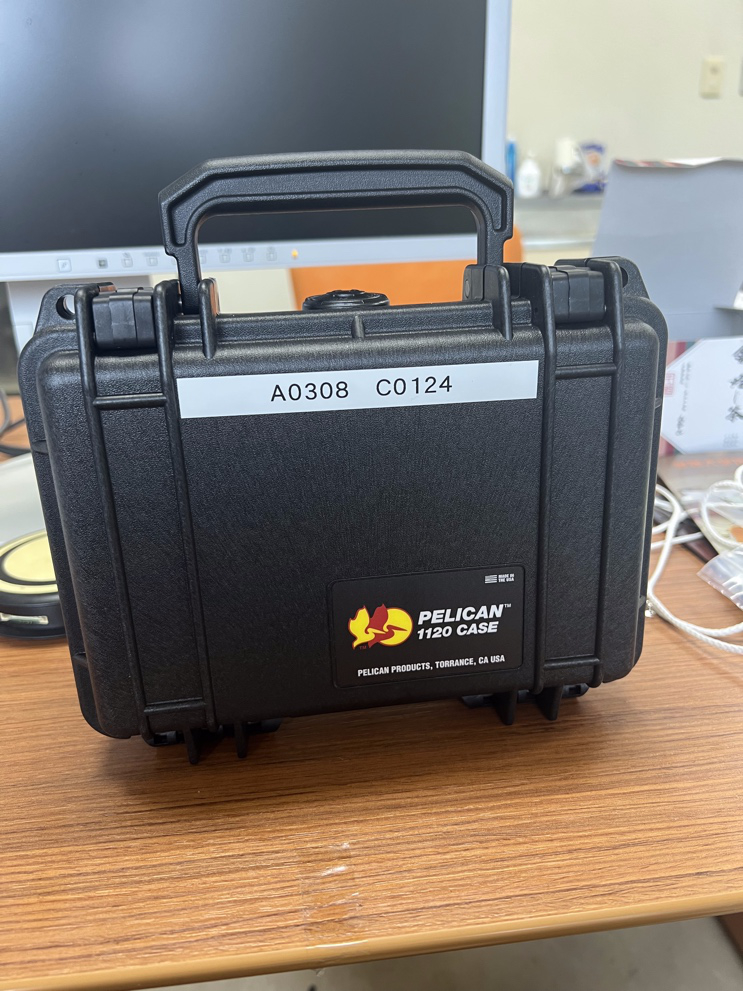
There are pieces of an actual asteroid in my office!!
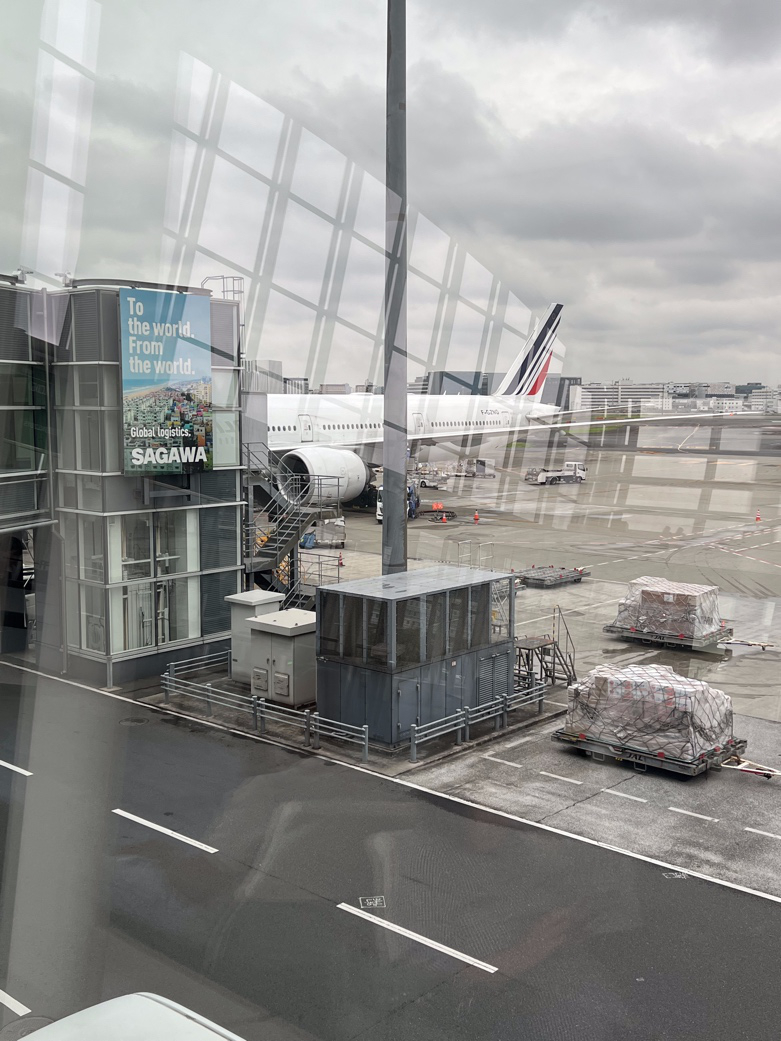
The following day, I had a morning flight to France. I arrived at the airport early, and presented forms describing the Ryugu grains to the customs desk. As outreach grains will not be used for science, there is no problem with the sample box going through the x-ray system during security screening. However, the Pelican protective case and FFTC do look unusual so we prepared the customs forms explaining what I was carrying in advance!
Fortunately, there were no problems and I made it safely onto the flight. I remembered to carefully turn the FFTC inside the Pelican case so I could store the case horizontally under my seat.
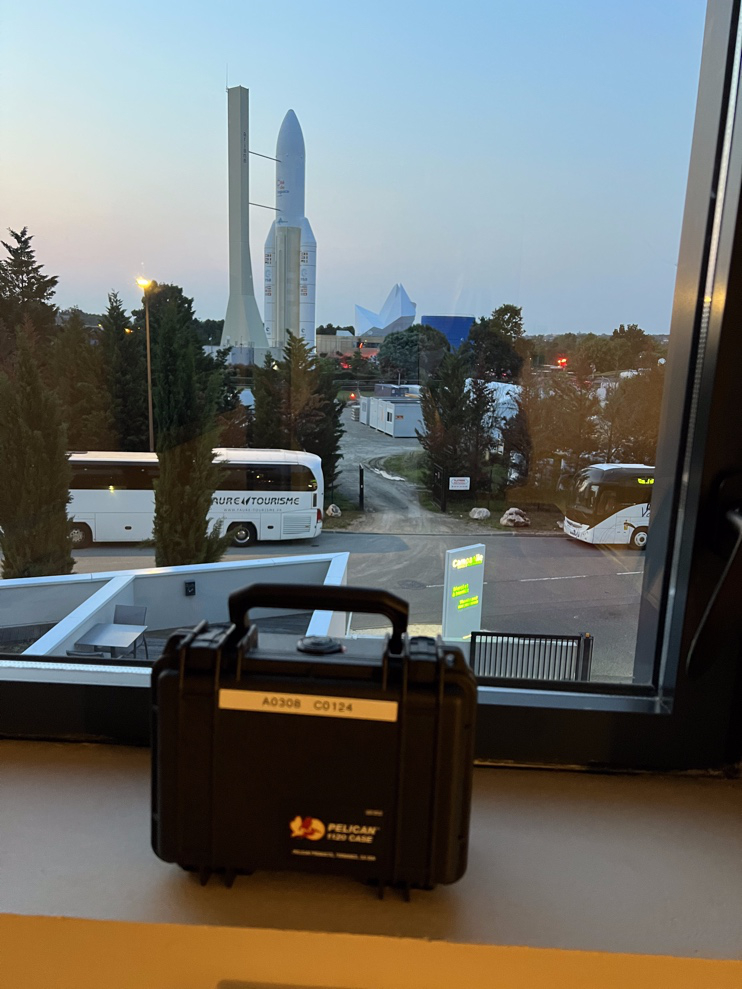
What a view! I arrived in Toulouse at about 9:30pm. My hotel window looked towards Cité de l'espace and the Ariane 5 rocket model in the grounds. I put the Pelican case containing the sample on the windowsill so that the Ryugu grains could see their new home.
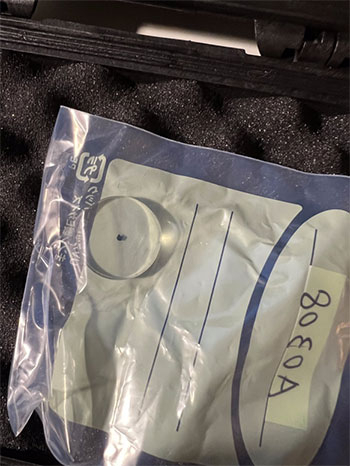
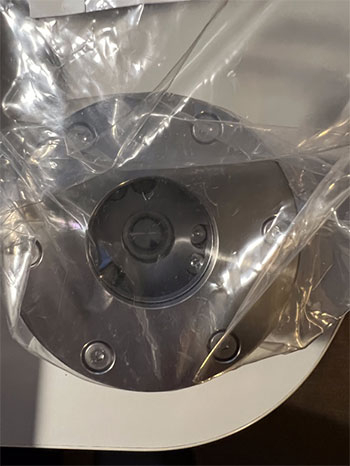
Before going to meet the team at Cité de l'espace, I checked the Ryugu grains were perfectly stored and ready to be displayed.
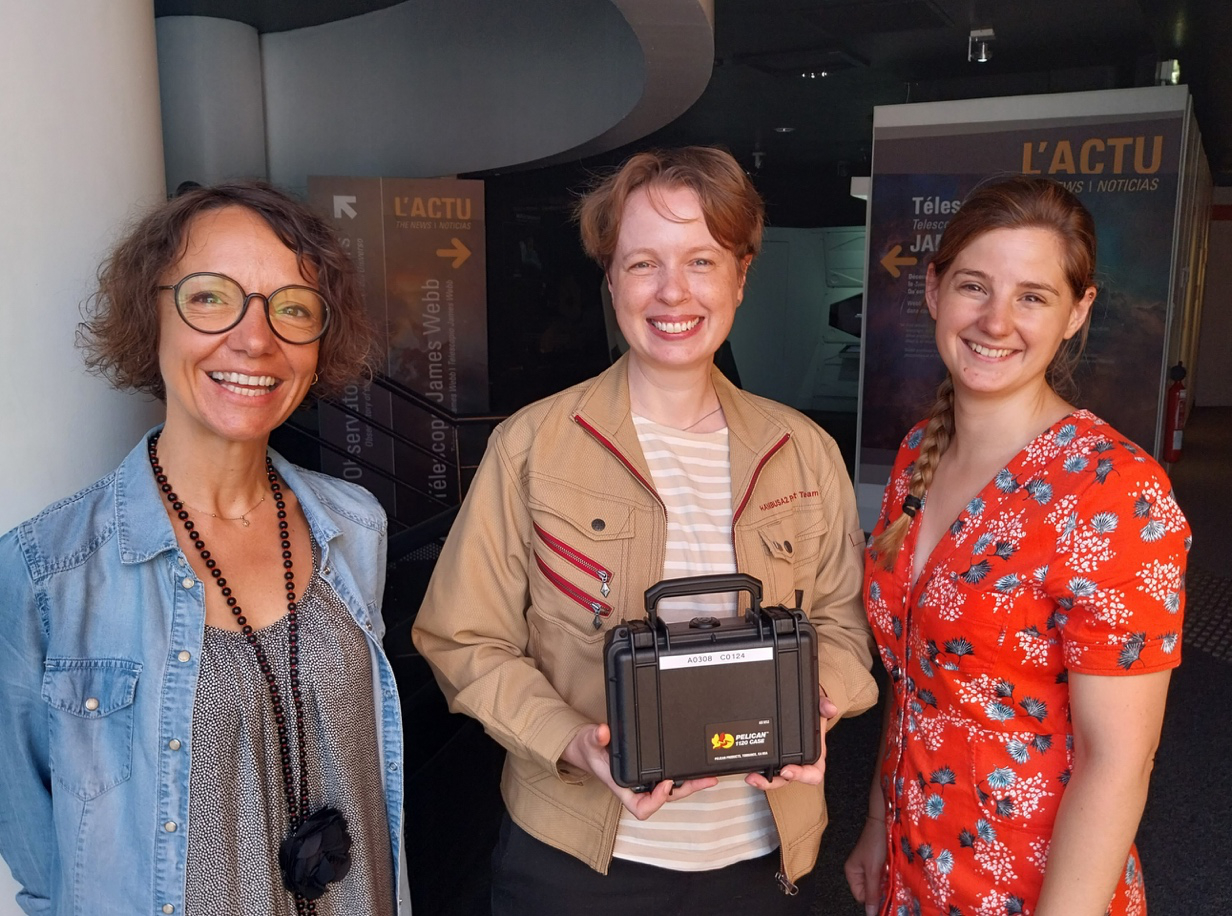
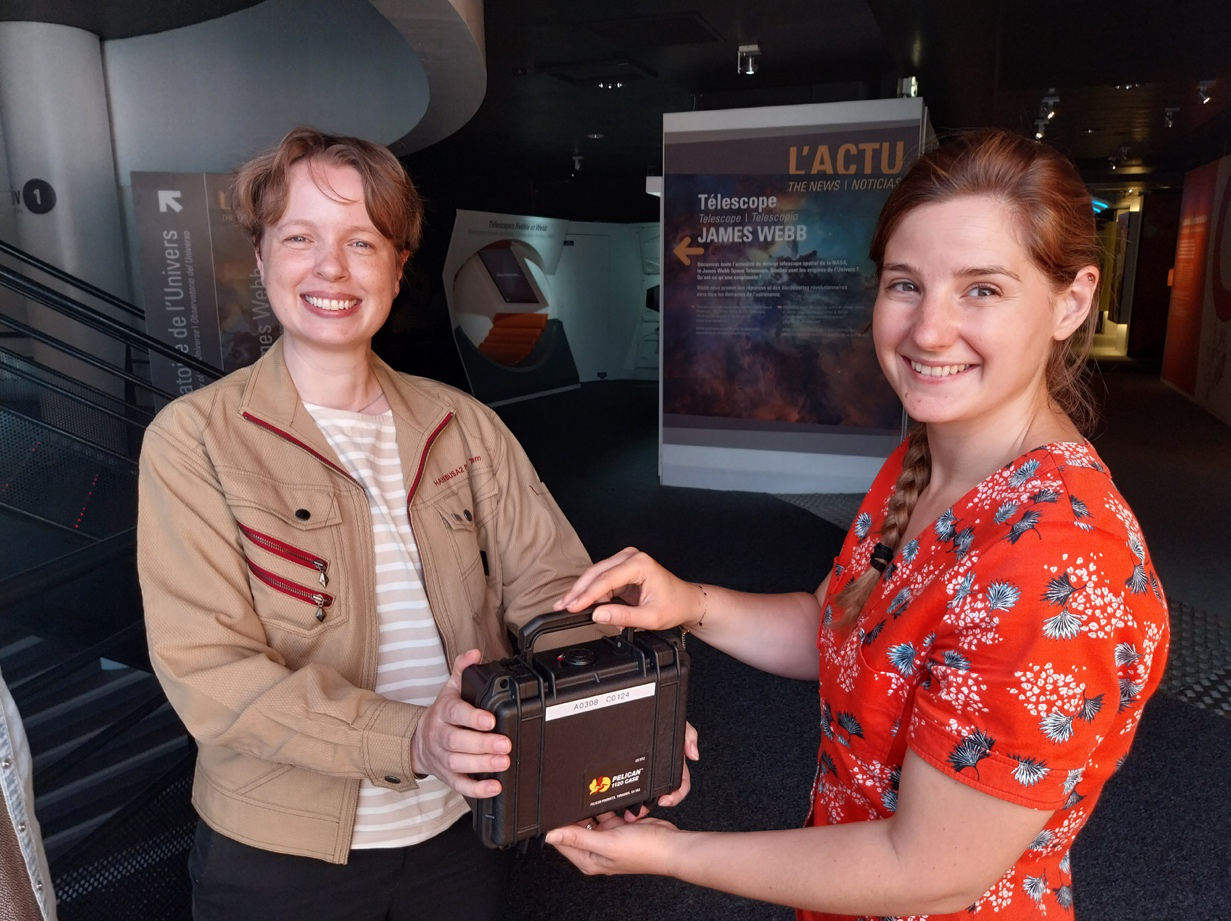
Delivering the Ryugu grains to Cité de l'espace Aude Lesty and Eglantine Lelong! Mission complete!
After the Ryugu sample grains were securely stored, Eglantine gave me a tour. Due to recent flooding, Cité de l'espace was closed to the public that day so we were able to explore nearly by ourselves! Cité de l'espace was ready to fully open its doors again the following day.
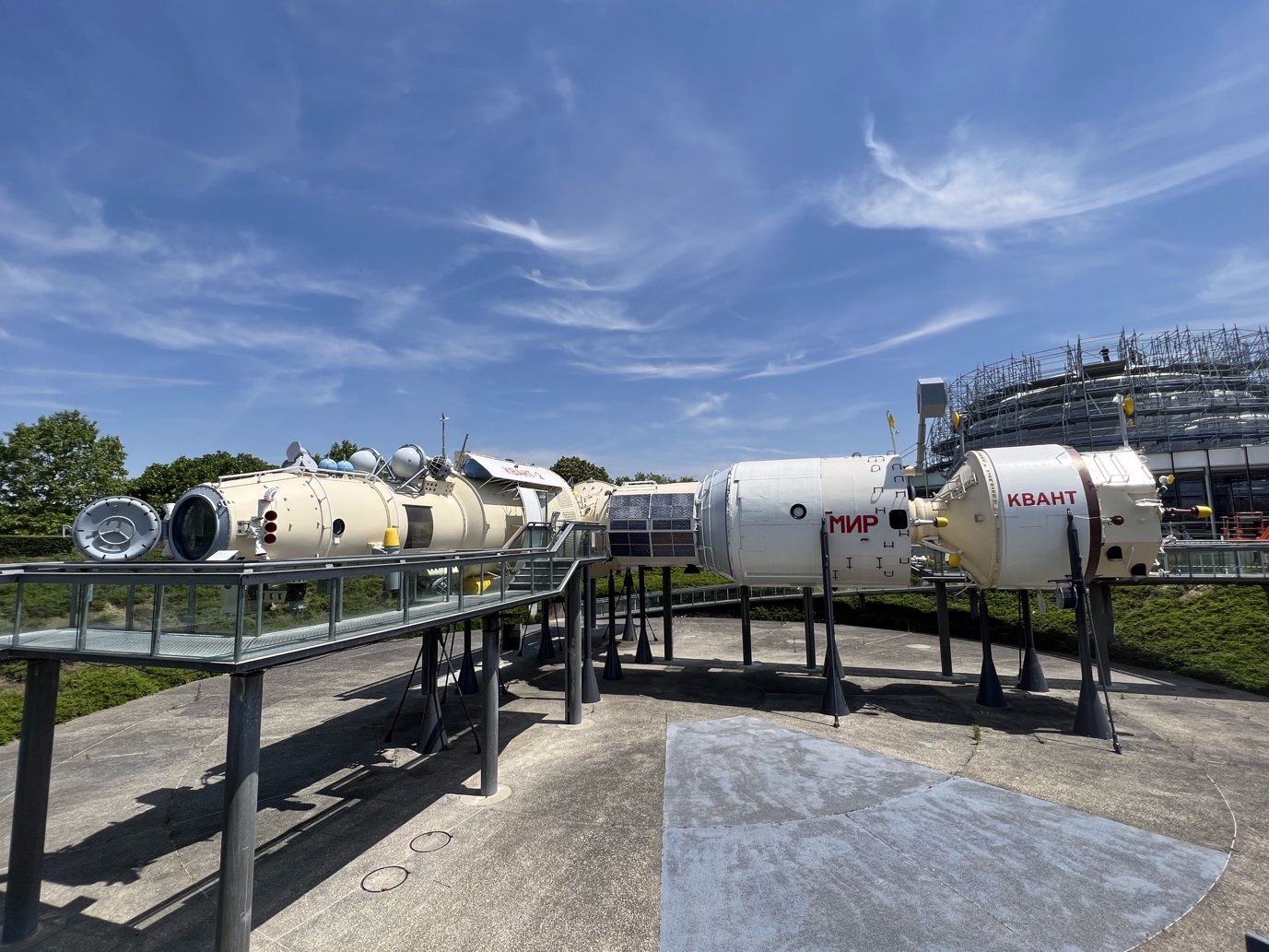
In addition to the huge Ariane 5, the grounds of Cité de l'espace include large exhibits from space programs from all over the world. One of my favourites was the full-scale model of the Soviet Union's Mir space station that was developed for mechanical testing. Modules were added to the station on multiple occasions, and this is Mir as it would have looked between 1990 - 1995.
Behind Mir is a new exhibit due to open this October where visitors will get to experience the high g astronauts feel during a rocket launch.
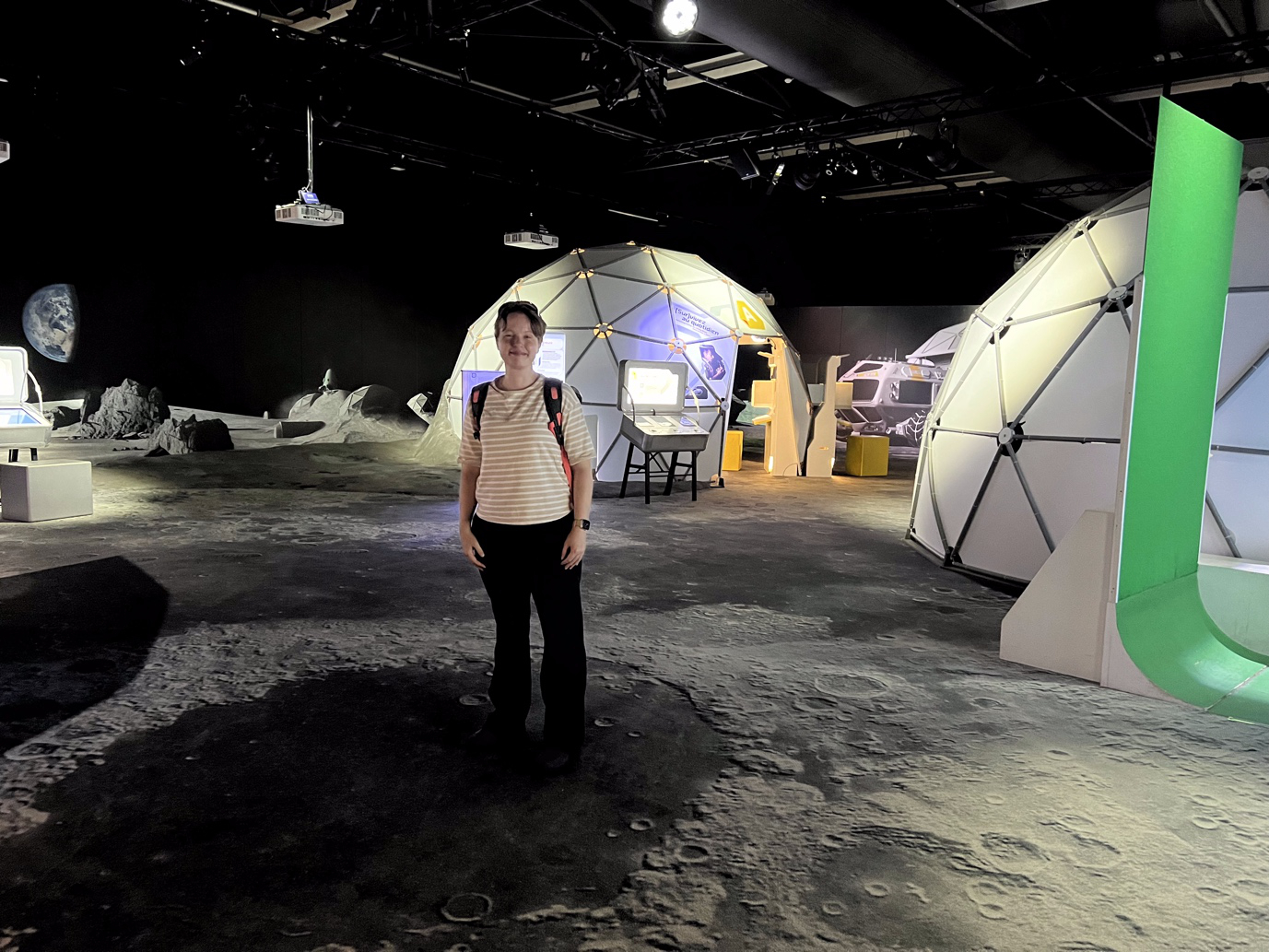
Another amazing exhibit was a floor designed to resemble a possible future lunar base. The carpet resembled the Moon's surface, complete with asteroid footprints, and the rovers and lunar landers can be seen projected onto the walls. There was even a lunar rover where you could sit and ride across the Moon's surface!
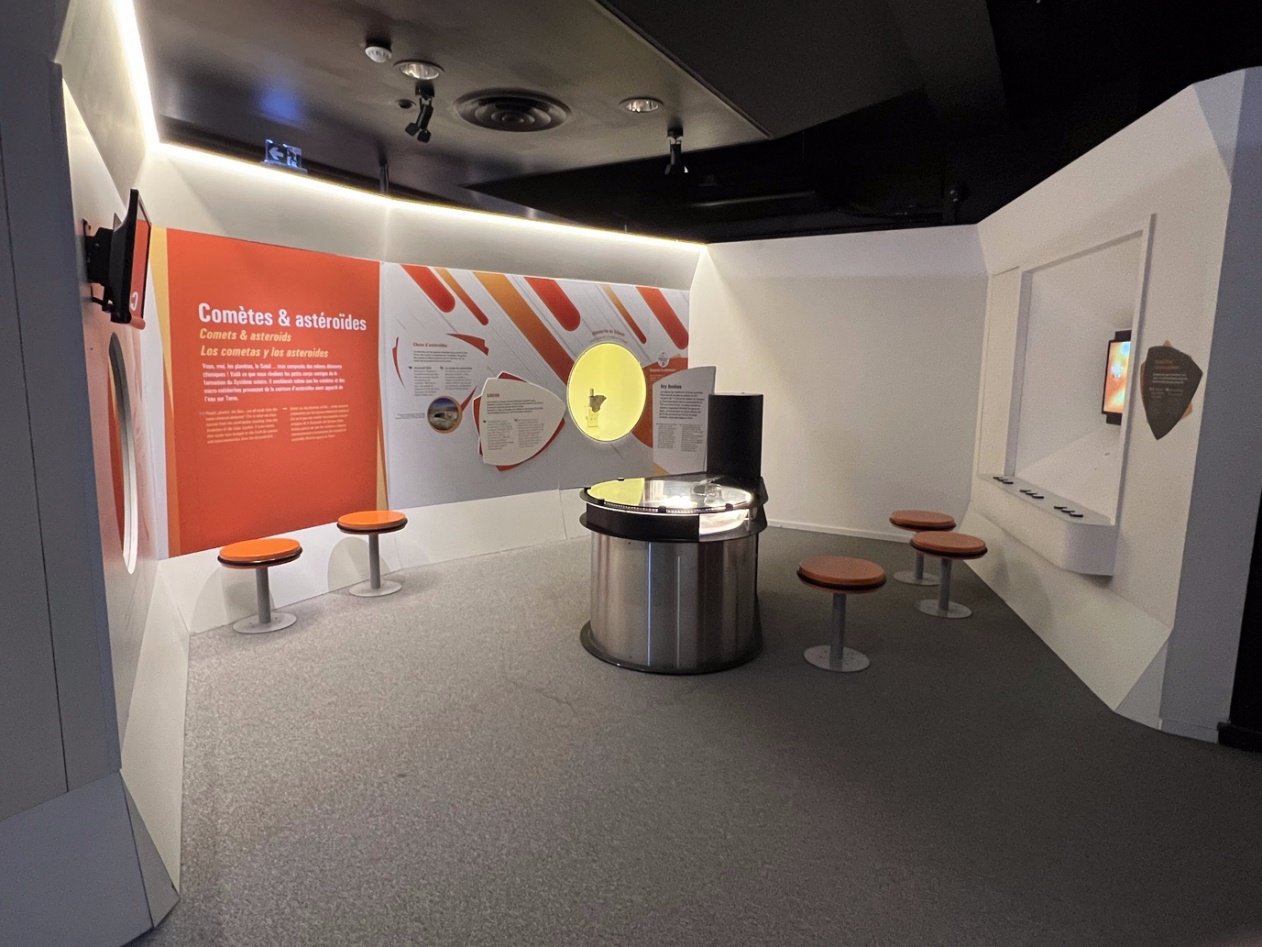
The grains from asteroid Ryugu will be displayed in this area, on the right. The space will be redesigned for this exhibit. We cannot wait to see the sample in place!
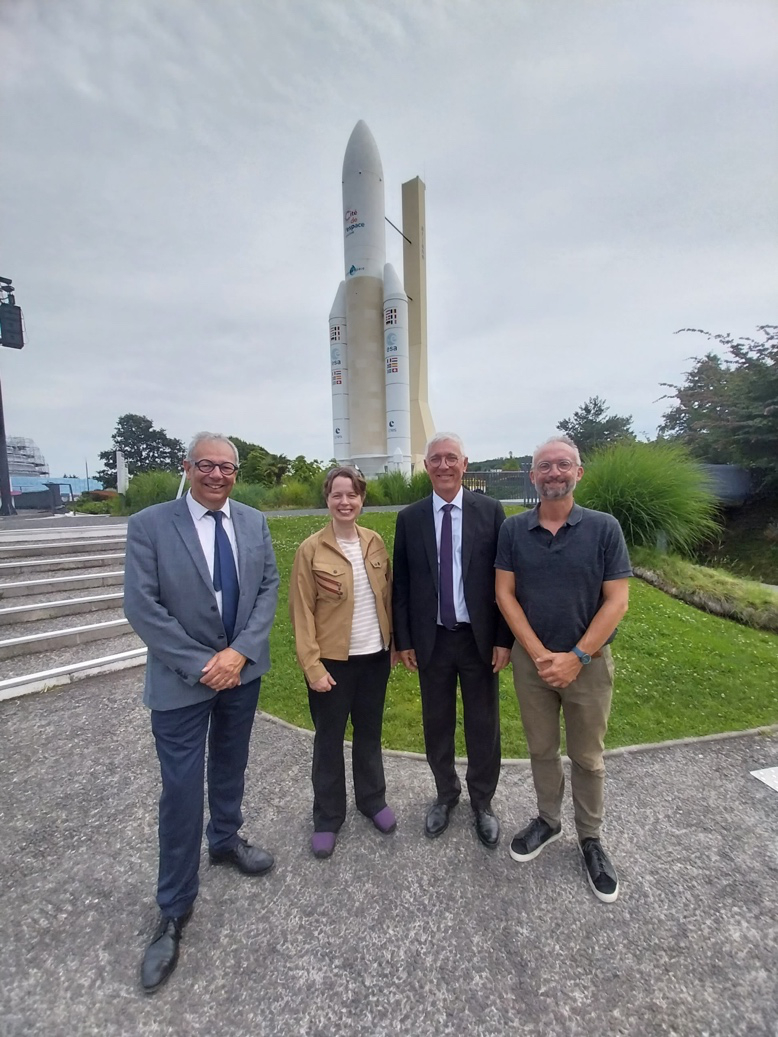
At the end of the visit, we also met the Chief Executive Officer of Cité de l'espace, Jean Baptiste Desbois (far left), and the Vice President of Toulouse Metropole, Jean-Claude Dardelet (centre right). The Director of Education, Science and Culture at Cité de l'espace, Christophe Chaffardon (far right), has been one of our main collaborators in organising the loan of the Ryugu grains.
The grains from asteroid Ryugu will be on display at Cité de l'espace on September 9 and 10, to coincide with the Japan games for the Rugby World Cup which will be held in Toulouse. They will then be moved to permanent display cases from the end of October, and be on display throughout the following year. Do visit if you are in the area!
Reported by Elizabeth Tasker, Department of Solar System Sciences
(2023/06/28)

